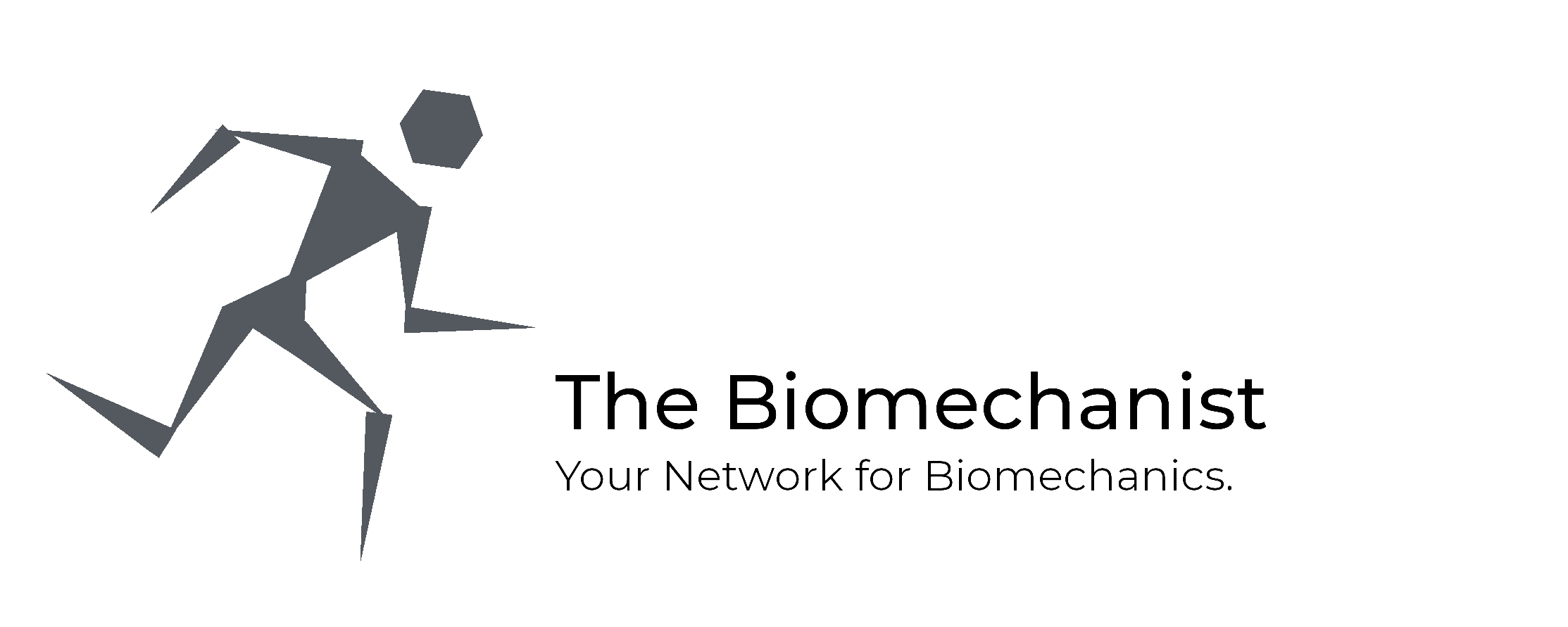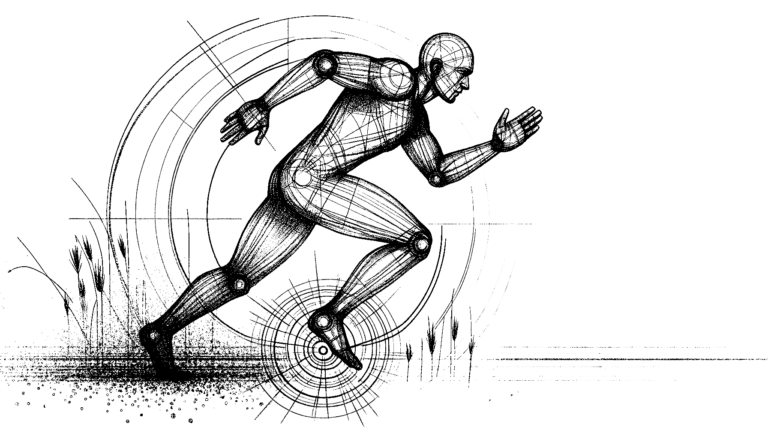The body’s center of mass (COM), or also called the center of gravity, is a fictitious point at which the mass of the entire body can be thought of. It is the only point on a body at which the weighted, relative position of the distributed masses has the value zero. The center of mass is particularly important because it is the point of application for external forces and torques, such as gravity.
The body’s center of mass is a fictitious point, as it is neither visible nor tangible and does not even necessarily have to be at a fixed point on the body. Rather, it depends on the mass distribution within the body. In the case of a rigid body, it is actually always in the same place, as the individual mass parts cannot move. With moving bodies, such as the human organism, it shifts as soon as parts of the body are moved. With certain movements, the COM even leaves the body, but more on this later.
- Why do we need the body’s center of mass?
- Center of mass height in the human body
- Calculations
- References
Why do we need the body’s center of mass?
The body’s center of mass is very relevant in many areas of biomechanics. If you describe the kinematics of a person in the 3D space, for example, it quickly becomes apparent: The individual body parts move at different speeds at the same time and are accelerated to different degrees. If we want to know how a person moves as a whole, we need the body’s center of gravity. This describes how a body moves on average.
The center of gravity is also important for various types of movement. When turning freely in the air, such as a somersault or a twist, the axis of rotation always runs through this point. Only when you are in contact with the environment, e.g. holding tight during giant swing on the high bar in gymnastics, can you shift the axis of rotation. In the case of the giant swing, the axis of rotation would correspond to the horizontal bar.
Just another sports example: In high jumping, an athlete’s performance is determined by how high he can raise his COM. In earlier high jump techniques, such as the scissor jump, athletes had to lift their COM above the high jump bar in order to clear it in accordance with the rules. The now established jumping technique, the so-called Fosbury Flop, on the other hand, makes use of the displacement of the COM. The athlete winds their body around the high jump bar in such a way that the COM does not have to cross it at all. The KSP leaves the body and is guided under the bar. This allows athletes to cross a higher bar with the same amount of lifting work.

The COM can also be used as a measure of a person’s stability and balance [2,3]. In order to maintain balance, a person must keep the projection of the center of mass above an equilibrium surface in a static state, e.g. when standing. The more the center of gravity moves, the less stable a person stands [3].
Center of mass height in the human body
With the aid of two scale, the relative height of a person’s COM can be determined experimentally without great effort [4]. Experiments have shown that the COM height in the human body is approximately 56% of body height in men when standing with arms next to the body. In women, this is slightly lower at approx. 54% due to anatomical differences [4]. These values are of course only average values. Due to the individual body composition, the height of the COM can vary from person to person. Canoeists who train their upper body intensively but tend to neglect their lower extremities will have a significantly higher COM than cyclists who tend to strain their lower extremities.
The relative height of the COM also differs between children and adults. Because the head develops first and has a relatively high weight compared to the rest of the body, which develops later, the relative COM height is higher than in adults. It decreases as development progresses.
Calculations
For most applications, however, the relative COM height is not sufficient, as the person is usually not standing with their arms next to the body, but is moving in space and their body segments are always in different positions. Fortunately, there are ways to calculate the COM in space. To do this, we first divide the body into several segments (e.g. head, torso, upper arms, lower arms, hands, thighs, lower legs and feet). We now need two pieces of information for each segment for the formula to calculate the COM: the relative segment mass and its position in space. We can refer to the literature for the relative segment masses; Fig. 2 summarizes various sources on this.

For the position of the individual segments we have to use some kind of motion capture (2D video analysis, 3D video analysis or IMUs). If we know where and with which orientation the individual segments are located in space, we can again use the literature to determine the position of the centers of gravity of the segments (Fig. 3).

We can now feed the formula with these two pieces of information. The formula for calculating the COM coordinates in three-dimensional space is as follows:
Here \({KSP}_{xyz}\) are the KSP coordinates, \({(x|y|z)}_i\) the coordinates of a segment and \(rel.\ m_i\) the relative mass of a segment. Thus, the coordinates of the KSP result from the sum of all segment coordinates multiplied by the relative masses of all segments. For a body consisting of three segments, the formula would look like this:
Example
Figure 4 shows a snowman consisting of 2 snowballs. The coordinates and the masses of the two balls are shown:

We now adapt the formula so that it fits two segments in two-dimensional space:
First we have to convert the absolute masses into relative masses. To do this, we divide the individual segment masses (\(m_1=2kg\ , m_2=8kg\)) by the total mass (\(m_{total}=10kg\)) and get \(rel. m_1=0.2\) and \(rel. m_2=0.8\). Now we insert the values and calculate:
References
Ramachandran, Hari & Vasudevan, Devanandh & Brahma, Aditya & Pugazhenthi, S.. (2016). Estimation of mass moment of inertia of human body, when bending forward, for the design of a self-transfer robotic facility. Journal of Engineering Science and Technology. 11. 166-176. Link to pdf.
Winter, David A.; Patla, Aftab E.; Prince, Francois; Ishac, Milad; Gielo-Perczak, Krystyna (1998). Stiffness Control of Balance in Quiet Standing. Journal of Neurophysiology, 80(3), 1211–1221. doi:10.1152/jn.1998.80.3.1211
Erdmann, W.S. (2018). Center of mass of the human body helps in analysis of balance and movement. MOJ App Bio Biomech. 2(2):144–148. DOI: 10.15406/mojabb.2018.02.00057
Gambino, S., Mirochnik, M., Schechter, S. (2005). Center of Mass of a Human – The Physics Factbook (hypertextbook.com)




